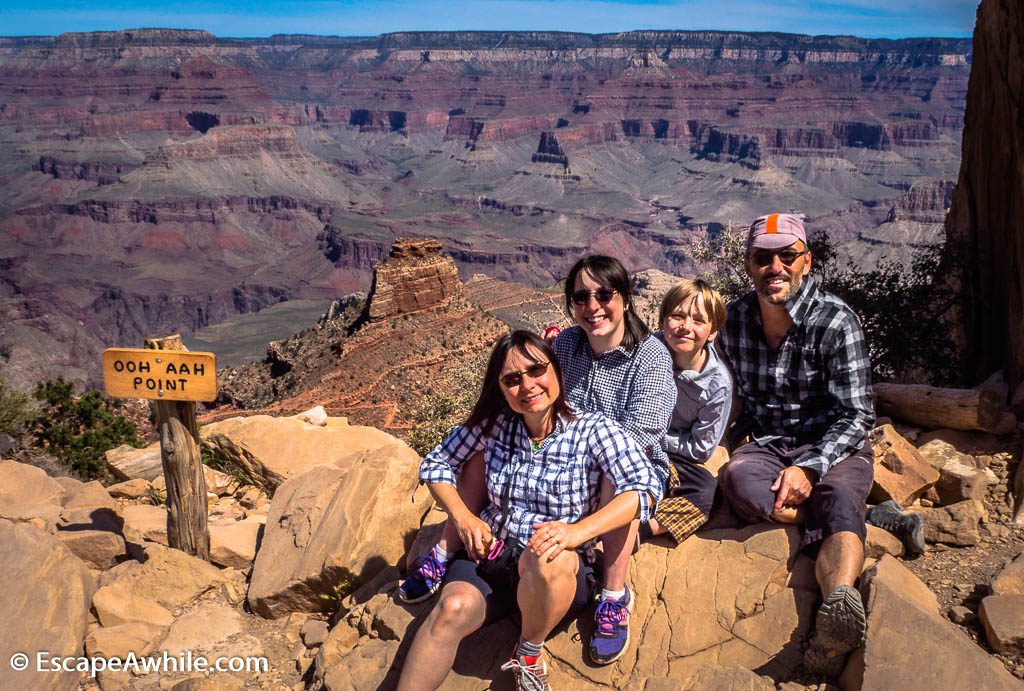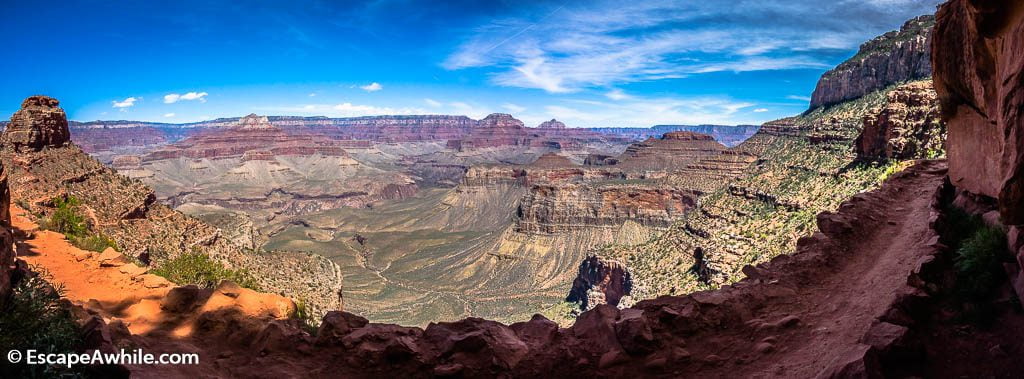The South Kaibab Trail is one of the hikes that takes you from the Grand Canyon South Rim down into the canyon proper. As a day hike, you can explore down to Skeleton Point. For an overnight hike, the South Kaibab Trail can take you all the way to the Colorado river.
Once you have spent a day or two exploring the Grand Canyon South Rim from the top, it is time to hike down into the canyon. South Kaibab Trail is one of the options on the South Rim. The trail drops steeply into the canyon, with many great views.
Consider your strength and the weather conditions when deciding on how far to go. Distances are short, but the elevation loss is massive. As the warning signs say: ‘Going down is optional. Getting back up is mandatory.’ It takes about double the time and effort to get back up than going down.


Ooh Aah Point
First of the prominent lookouts along the trail, which is a good turnaround point in warm weather, is the Ooh Aah point. As the name suggests, it offers some great views.
Ooh Aah point is 0.9 mi / 1.4 km (one way) from start of the trail, the elevation change from the top being 760 ft / 230 m.





Views from the Ooh Aah point, over Cedar Ridge and Skeleton Point towards the Colorado river canyon. South Kaibab Trail, South Rim, Grand Canyon, Arizona, USA
Cedar Ridge
The second good turnaround point is Cedar Ridge, 1.5 mi / 2.4 km (one way), 1120 ft / 340 m down from the start. This makes for a good family hike destination. It also has pit toilets. This is where most of of our family, except for dad, turned back.





Skeleton Point
The furthermost day hike destination along the South Kaibab Trail is Skeleton Point, 3.0 mi / 4.8 km (one way) and 2040 ft /620 m down from the start (e.g. double the hike to Cedar Ridge). Skeleton Point offers a first glimpse of the Colorado river, another 2700 ft / 800 m below.

Views from the South Kaibab Trail, South Rim, Grand Canyon, Arizona, USA






Climbing back from Skeleton Point. South Kaibab Trail, South Rim, Grand Canyon, Arizona, USA
Overnight hike: South Kaibab to Bright Angel trail
The South Kaibab Trail can be combined with the Bright Angel trail into an overnight adventure, which will take you all the way down to the Colorado river. This is a strenuous hike of at least 14 mi / 23 km, dropping almost 5000 feet / 1500 vertical meters, which then need to be climbed back up.
A backcountry hiking permit and proper preparation is required. For more info, see the official National Park Service ‘Introduction to Backcountry Hiking’ brochure.

